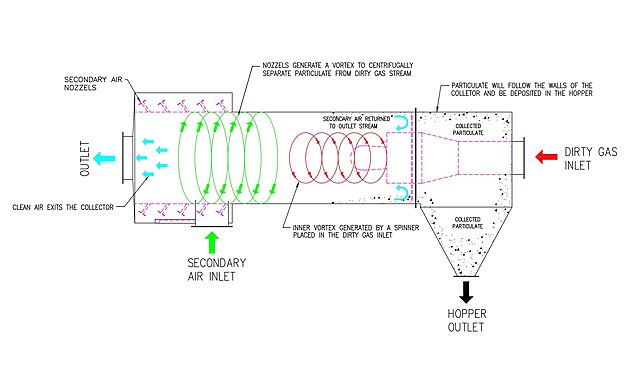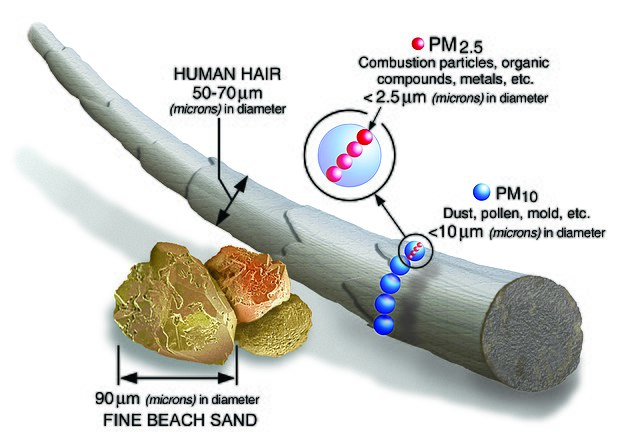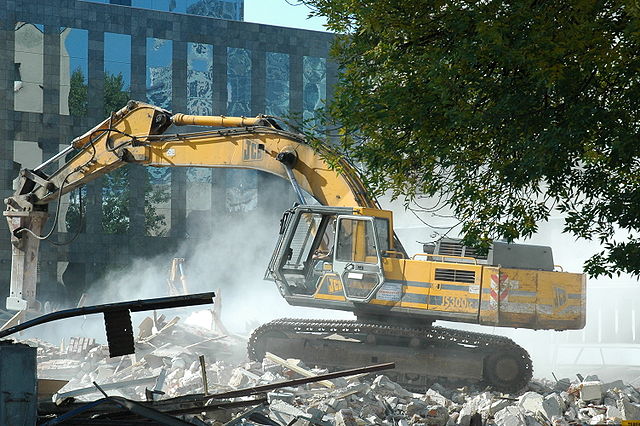Cyclonic separation is a method of removing particulates from an air, gas or liquid stream, without the use of filters, through vortex separation. When removing particulate matter from liquid, a hydrocyclone is used; while from gas, a gas cyclone is used. Rotational effects and gravity are used to separate mixtures of solids and fluids. The method can also be used to separate fine droplets of liquid from a gaseous stream.
A partially demolished factory with dominating cyclonic separators
Airflow diagram for Aerodyne cyclone in standard vertical position. Secondary air flow is injected to reduce wall abrasion.
Airflow diagram for Aerodyne cyclone in horizontal position, an alternate design. Secondary air flow is injected to reduce wall abrasion, and to help move collected particulates to hopper for extraction.
Particulates or atmospheric particulate matter are microscopic particles of solid or liquid matter suspended in the air. The term aerosol commonly refers to the particulate/air mixture, as opposed to the particulate matter alone. Sources of particulate matter can be natural or anthropogenic. They have impacts on climate and precipitation that adversely affect human health, in ways additional to direct inhalation.
PM2.5 and PM10 compared with a human hair in a graphic from the Environmental Protection Agency
Excavator (a type of heavy equipment commonly used at construction sites and roadworks) demolishing the remnants of the pre-war Postal Train 0880Station (Dworzec Pocztowy) at Jerozolimskie Avenue, Poland
Particulates in the air causing shades of orange, yellow, pink, and grey in Mumbai during sunset
Air pollution measurement station in Emden, Germany







